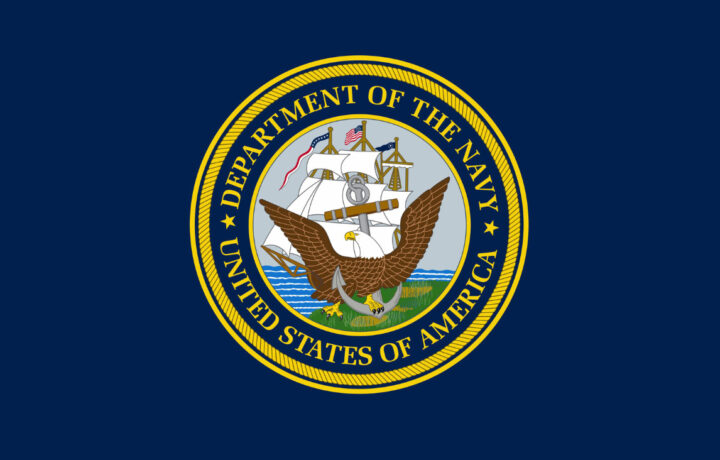The United States Navy is close to naming the winner of its highly anticipated contract for its sixth-generation fighter. The still-unnamed aircraft, known simply as the F/A-XX, will eventually replace the service’s aging carrier-capable F/A-18 Super Hornet, the updated variant of the McDonnell Douglas F/A-18 Hornet.
Aerospace giant Boeing, which acquired McDonnell Douglas, is currently producing the Block III models of the Super Hornet, with the final aircraft scheduled for delivery by the end of 2027. That has led to speculation that Boeing could simply transition to the sixth-generation manned fighter, and the company previously released concept art of its expected prototype earlier this year.
It is currently down to Boeing and Northrop Grumman, as Lockheed Martin was eliminated from the competition last winter. Just weeks later, President Donald Trump and Secretary of Defense Pete Hegseth announced that Boeing would build the F-47, the centerpiece system of the United States Air Force’s Next Generation Air Dominance (NGAD) sixth-generation manned fighter.
Northrop Grumman’s History of Carrier-based Aircraft
Northrop Grumman could be seen to have an inside edge, notably given that Grumman had a long history of producing carrier-based aircraft for the U.S. Navy, going back to the Grumman FF “Fifi” biplane in the 1960s, all the way to the F-14 Tomcat, which was made famous in the 1986 film Top Gun. Northrop has also produced the E-2 Hawkeye, the all-weather, carrier-capable tactical airborne early warning (AEW) aircraft since 1960.
Yet, as Northrop Grumman is also the prime contractor on the B-21 Raider, the United States Air Force’s long-range strategic bomber that is set to enter service later this decade, replacing the Rockwell B-1B Lancer and the Northrop B-2 Spirit. It will operate alongside the Boeing B-52 Stratofortress, and current plans call for the Air Force to receive at least 100 of the flying wing stealth bombers, with some officials suggesting that at least double that number could be required.
Boeing Still In It
Although Boeing’s history of carrier-based aircraft isn’t as significant as that of Grumman, it is still producing the Super Hornet. Moreover, as noted, it was selected to build the F-47, the aircraft that will replace Lockheed Martin’s F-22 Raptor fifth-generation air superiority fighter.
However, Boeing is also building the F-15EX Eagle II, a modernized version of the F-15E Strike Eagle, for the Air Force and Foreign Military Sales (FMS). The question is whether Boeing could have too many projects running simultaneously, but the U.S. Navy is still likely to focus on the aircraft that deliver its needed capabilities.
Operating Alongside the F-35C
The other consideration is that the F/A-XX isn’t meant to replace the F-35C, the carrier-based variant of the Joint Strike Fighter, which is operated by the United States Navy and United States Marine Corps on the sea service’s nuclear-powered aircraft carriers. The sixth-generation aircraft will serve alongside the F-35C for decades to come.
The USMC also operates the F-35B, the short takeoff and vertical landing (STOVL) model, from the Navy’s amphibious assault ships. The Marines have nearly completed the transition from the McDonnell Douglas AV-8B Harrier II to the F-35B.
The Pentagon Will Have Two Sixth-Generation Fighter Programs
There had been calls from some officials in the Pentagon to delay the F/A-XX by two or three years, allowing the NGAD’s F-47 to take shape and ensuring that lawmakers were willing to support two different programs. The F-35 Lightning II is operated by the U.S. Air Force and U.S. Navy, albeit with different models; however, the requirements of the F-47 and F/A-XX have been so significantly different that it would be impossible to find common ground.
Hence, there has been apprehension about two different, but not entirely competing, programs.
However, as China is already known to be working on its own sixth-generation fighter, which analysts have dubbed the J-36, the Air Force also reversed course after it had put the NGAD program in a holding pattern last year.
More Than a Fighter
It has been reported that the F-47, which will be a manned (or optionally-manned) fighter, will be equipped with advanced networking and electronic warfare capabilities, and supported by unmanned aerial systems (UAS), notably the Collaborative Combat Aircraft (CCA).
That program has begun flight testing of the drones that could serve as “loyal wingmen” and force multipliers.
Earlier this year, Anduril’s “Fury” and General Atomics Aeronautical Systems’ (GA-ASI’s) “Gambit” UAS received the designation YFQ-44A and YFQ-42A, respectively. Those drones were selected over competing offerings from Boeing, Lockheed Martin, and Northrop Grumman.
It is expected that the F/A-XX will be supported by those or similar UAS when it enters service.




